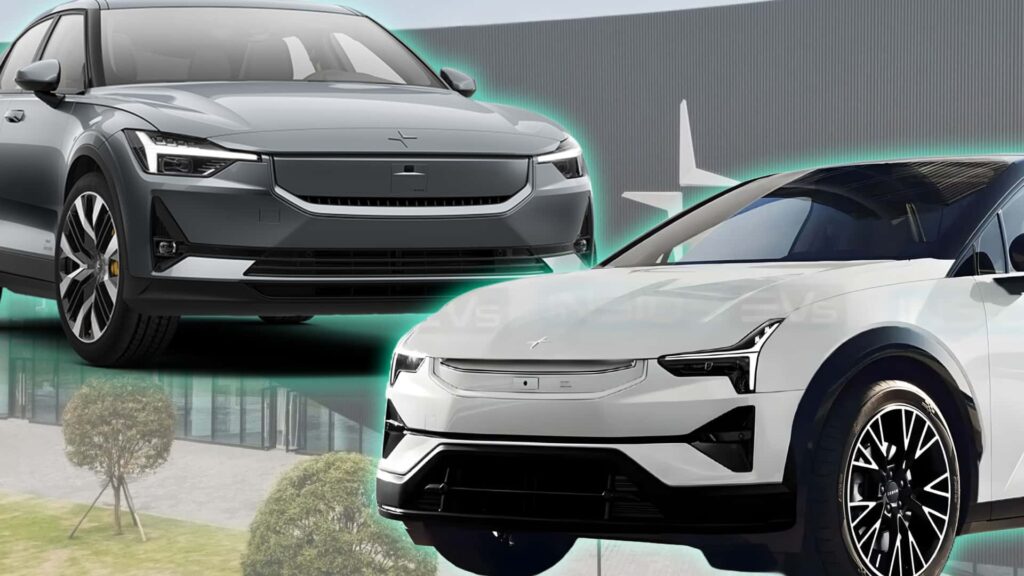Now, with the Polestar 7 on the horizon, Polestar aims to expand its reach and appeal to a wider audience. The compact SUV segment is a popular and profitable market, and Polestar is determined to make its mark in this space. By offering a more affordable option compared to its higher-end models, Polestar hopes to attract a broader customer base while still maintaining its reputation for premium quality and performance.
CEO Michael Lohscheller emphasized the importance of entering the compact SUV market, noting its rapid growth and potential for profitability. The Polestar 7 will not replace the Polestar 2 sedan but will complement the brand’s existing lineup, providing customers with a diverse range of options to choose from. Lohscheller envisions a “super-exciting portfolio” that caters to different preferences and needs, ensuring that Polestar remains a competitive player in the EV market.
The success of the Polestar 2 has solidified the brand’s position as a serious contender in the EV space. Building on this momentum, Polestar is poised to introduce the Polestar 7 as its next flagship model, offering a blend of luxury, performance, and affordability. With a focus on innovation and sustainability, Polestar is setting the stage for a bright future in the electric vehicle industry.
As Polestar continues to push the boundaries of electric mobility, the upcoming Polestar 7 represents a significant milestone in the brand’s evolution. By expanding its product lineup and targeting a broader market segment, Polestar is poised to attract a new generation of EV enthusiasts who value style, performance, and sustainability. With the Polestar 7, the future of electric driving looks brighter than ever. Polestar, the Swedish electric performance car brand, has been making waves in the automotive industry with its innovative and stylish vehicles. One of its most popular models, the Polestar 2 sedan, has undergone several upgrades over the years to keep up with the changing market demands.
One significant change to the Polestar 2 was switching its entry-level model from front-wheel drive to rear-wheel drive. This adjustment not only improved the car’s performance but also enhanced its driving dynamics, making it more appealing to enthusiasts. Additionally, Polestar has expanded the range and added more features to the Polestar 2, making it a more competitive option in the electric vehicle market.
Despite these upgrades, the Polestar 2 sedan has faced challenges in the SUV-dominated market. One major obstacle is the fact that the car is manufactured in China, which has led to increased tariffs in the United States. As a result, the price of the Polestar 2 has seen a significant hike, making it less accessible to potential buyers.
To overcome these challenges, Polestar is focusing on its newer models, such as the Polestar 3 SUV and Polestar 4 SUV-coupe. These models are manufactured in different locations, with the Polestar 3 being made in South Carolina alongside the Volvo EX90 and the Polestar 4 being produced in South Korea on a unique Volvo and Geely Group platform.
Looking ahead, Polestar plans to build the next generation of the Polestar 2 on a global EV platform that will eventually be used for all of its models, including the upcoming Polestar 7. By keeping the Polestar 2 in its lineup, the brand aims to attract buyers worldwide who are interested in electric sedans and provide more options for entering the Polestar family.
According to Polestar CEO Thomas Ingenlath, the Polestar 2 has been a successful car, with over 170,000 units sold. He believes that the Polestar 2’s popularity will continue to grow, with many customers upgrading to newer models like the Polestar 4 or Polestar 3. Ingenlath emphasizes the importance of maintaining a winning team and believes that the Polestar 2 will play a key role in the brand’s future success.
While the Polestar 2 continues to be a strong contender in the electric vehicle market, Polestar recognizes the growing demand for SUVs. To address this, the brand is working on the development of the Polestar 7, a new SUV model that will fill the gap in its lineup. Although details on the Polestar 7 are scarce, it is expected to fall somewhere between compact and midsize SUVs, competing with popular models like the Tesla Model Y.
As Polestar looks to the future, the focus remains on innovation, performance, and sustainability. With a lineup of electric vehicles that combine cutting-edge technology with Scandinavian design, Polestar is poised to make a lasting impact on the automotive industry. Polestar, owned by China’s Geely Group, is known for its innovative electric vehicles and plug-in hybrid platforms. As part of Geely Group, Polestar has access to a wide range of EV technologies and designs, including those from other brands like Zeekr X and Lynk & Co Z20. However, Polestar’s CEO, Lohscheller, emphasized the importance of streamlining its hardware to one common platform to reduce costs and improve efficiency.
According to Lohscheller, managing different platforms can be complex, with each car having thousands of different part numbers. By harmonizing their platforms, Polestar can reduce complexity, lower costs, and speed up their time to market. This strategic move is essential in the rapidly growing EV market, where competition is fierce, and innovation is key.
When asked about the potential U.S. ban on Chinese-sourced software, Lohscheller remained optimistic, stating that Polestar would find a solution before the regulations come into effect in 2027. As the U.S. market is crucial for Polestar’s success, the company is committed to overcoming any obstacles that may arise.
In conclusion, Polestar is focused on leveraging Geely Group’s resources to create cutting-edge electric vehicles that embody the Polestar DNA in design, technology, and performance. By streamlining their hardware and addressing regulatory challenges, Polestar is poised to continue making waves in the EV industry and capture the hearts of consumers worldwide.

